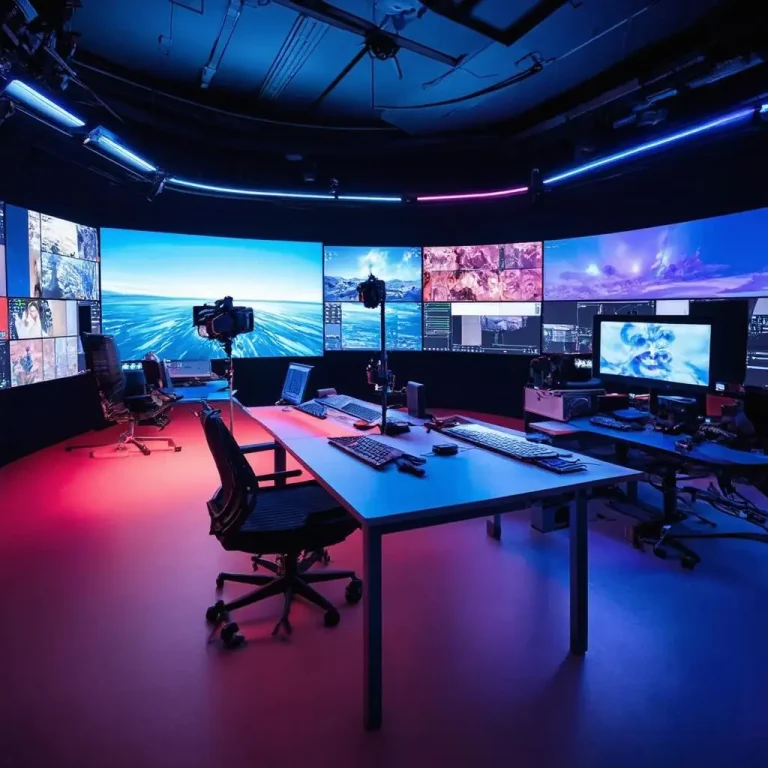When it comes to broadcast technology, High Dynamic Range (HDR) is a game-changer. At its core, HDR improves the contrast between the darkest blacks and the brightest whites on a screen. This means viewers experience more vivid and lifelike images, with details preserved in both bright and shadowy scenes. Unlike traditional Standard Dynamic Range (SDR), HDR leverages modern display capabilities to create a more immersive viewing experience that matches what our eyes naturally see.
Technical Breakthroughs in HDR
The evolution of HDR in broadcasting involves numerous technical advancements. First and foremost, there are several HDR formats like HDR10, Dolby Vision, and HLG (Hybrid Log-Gamma), each offering unique benefits. HDR10 has become a widely accepted standard due to its open-source nature, allowing more broadcasters to adopt it without licensing fees. Dolby Vision, on the other hand, provides dynamic metadata, which optimizes each video frame for the best possible picture on a scene-by-scene basis.
Broadcast equipment manufacturers are also releasing HDR-compatible cameras and editing tools, allowing producers to capture and process content with higher detail and a broader color spectrum. Advancements in encoder technology have further enabled efficient compression of HDR content, ensuring that high-quality images reach viewers without significant bandwidth demands.
Creative Opportunities with HDR
HDR technology opens a new realm of creative possibilities for content creators. Directors and cinematographers can craft scenes with enhanced visual storytelling, utilizing the expanded color palette and dynamic range to evoke emotion and highlight intricate details that would be lost in SDR. This leads to more engaging sports broadcasts, breathtaking documentaries, and visually stunning dramas that captivate audiences.
For example, live sports benefit immensely from HDR as it captures the vividness of each play, the sheen of sunlight off the field, and the fine details of players’ expressions. This immersive quality elevates viewers’ excitement and involvement. Similarly, nature documentaries gain lifelike realism, making viewers feel as if they’re journeying to distant landscapes.
Real-World Applications and Industry Insights
The adoption of HDR in broadcasting is steadily increasing, with industry leaders pioneering innovative applications. For instance, networks are experimenting with HDR for major live events, such as award shows and international sports tournaments. These events are perfect platforms to showcase the technology’s capabilities, delivering a richer and more vibrant viewing experience.
Industry veterans emphasize the importance of HDR in staying competitive. According to James Harper, a senior engineer at a leading broadcast company, "Investing in HDR is no longer a choice but a necessity for broadcasters aiming to provide premium content. It sets a new standard for audience expectation and satisfaction."
Furthermore, streaming platforms recognize HDR’s potential, integrating it into their services to meet audiences’ growing demands for superior quality content. This shift indicates a clear industry trend towards prioritizing enhanced viewer experiences.
Conclusion: Elevating Viewer Experience with HDR
HDR technology is undoubtedly setting new standards in how audiences consume visual media. Its ability to offer sharper, more vibrant images with greater depth and realism is transforming the broadcast landscape. As more networks and content platforms adopt HDR, the viewer experience will continue to improve, challenging industry professionals to keep pace with technological advancements and creative possibilities.
By embracing HDR, broadcasters can not only elevate their content quality but also strengthen their relationships with viewers who crave immersive and engaging visual experiences. While technical hurdles remain, the future of HDR in broadcast promises a captivating and enriching journey for both creators and audiences alike.
- Revolutionizing Post-Production: The Role of AI and Machine Learning - October 20, 2024
- From Concept to Screen: The Crucial Role of Industry Events in Shaping Broadcast Futures - October 19, 2024
- Embracing Innovation: The Future of Broadcasting - October 18, 2024














